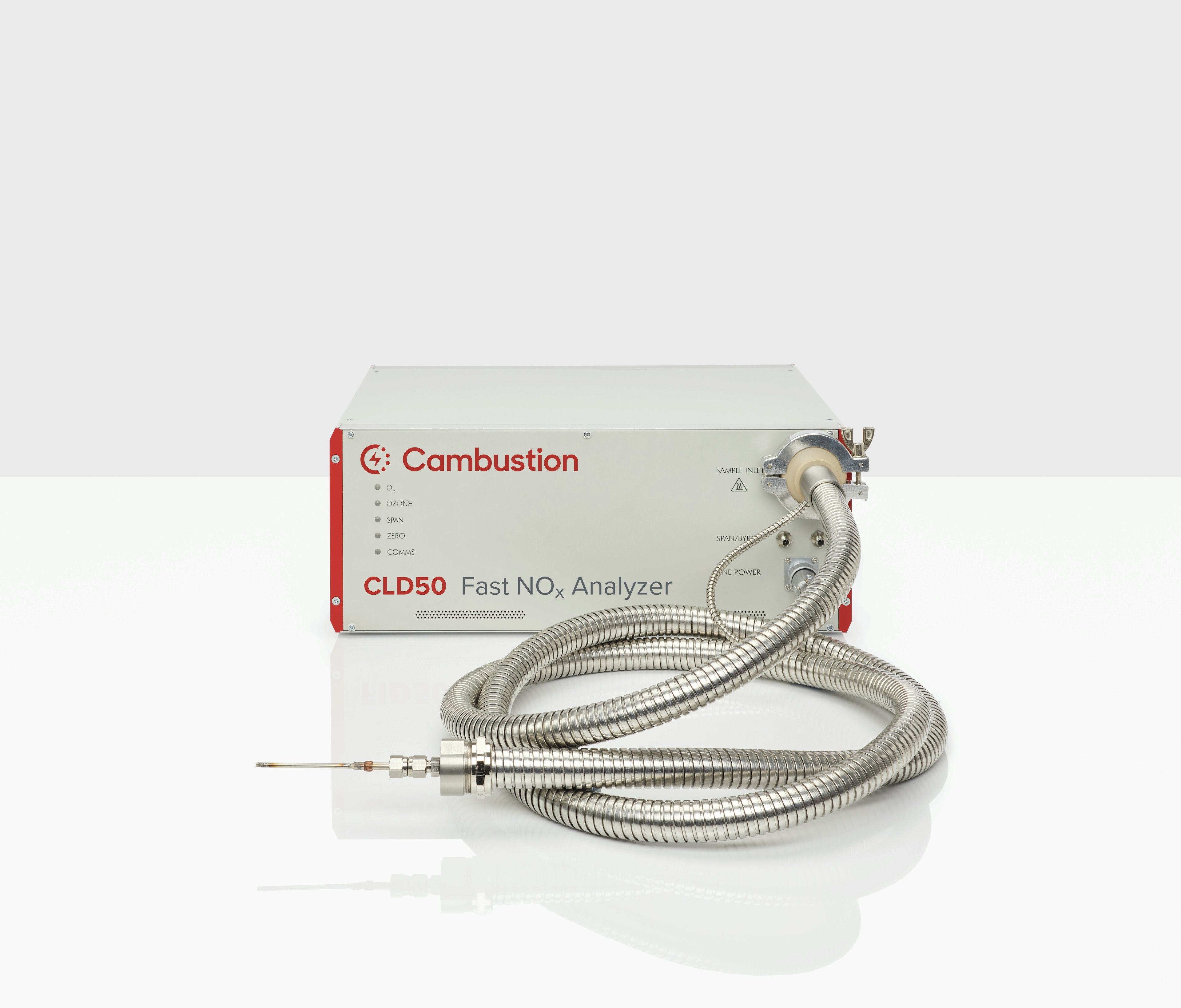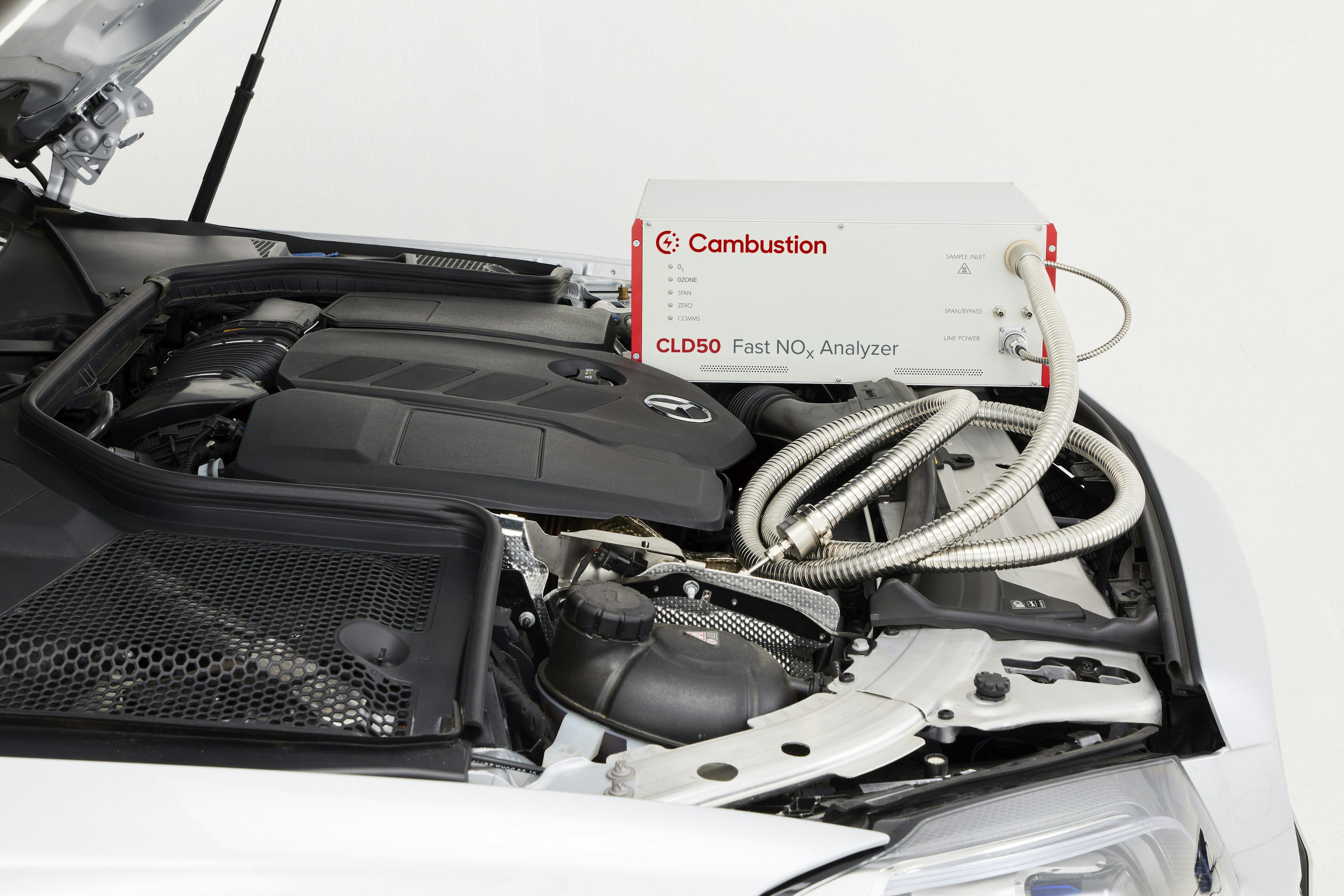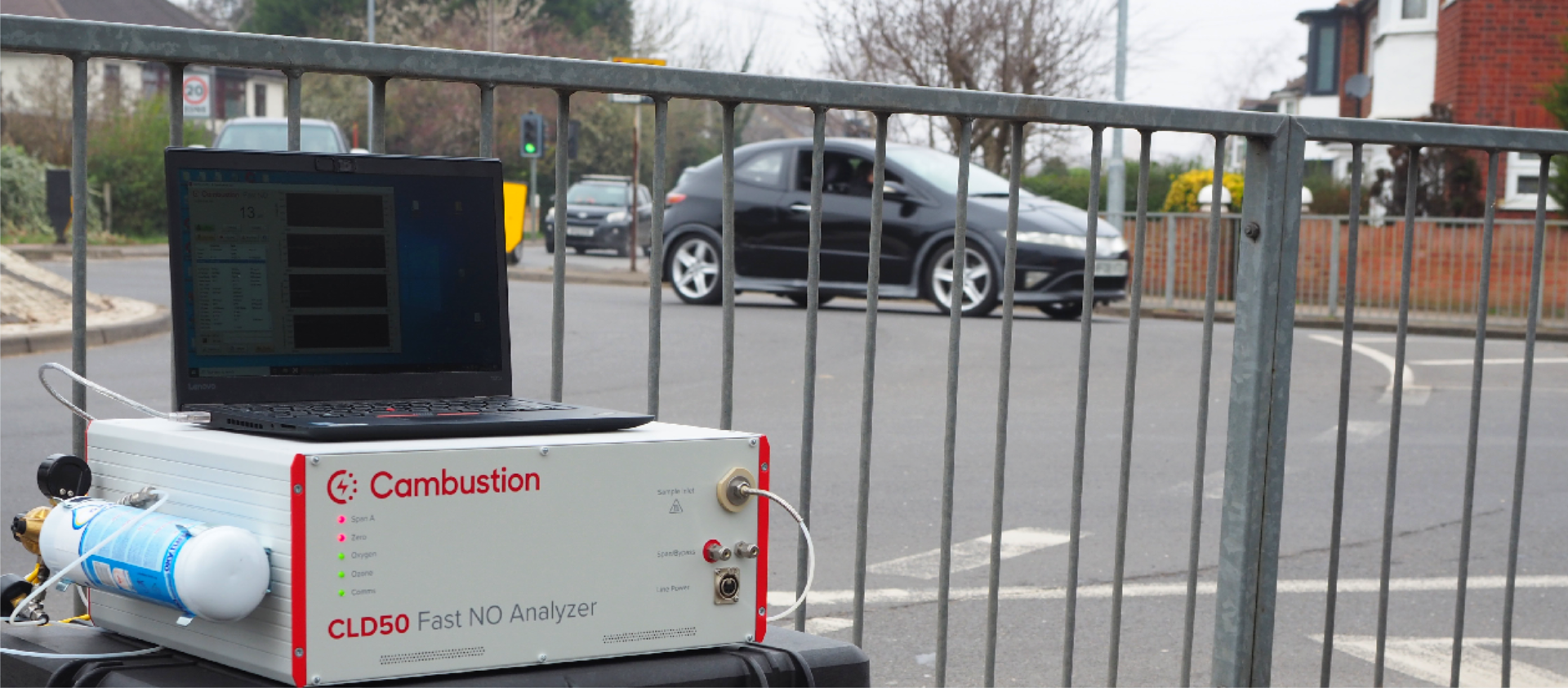CLD50 | NO and NO2 Analyser
New in 2021 is the CLD50, our fast CLD designed for both engine and non-engine single channel applications where a 15ms T10-90 response time is sufficient. The CLD50 is capable of both [NO] and [NO₂] measurement directly (NO₂ via LIF) with only oxygen and power needed for basic operation (zero and span gases required for complete calibration). The use of these detection methods ensures minimal cross sensitivities and allows retention of millisecond response times.
In addition to a heated line engine version, Cambustion have developed a super-sensitive yet ultra-fast version for air quality work in response to many researchers requesting faster real time data with a strong emphasis on identifying “gross emitters” entering urban environments and clean air zones. In ambient mode the CLD50 has a lower detection limit of 5 parts per billion while retaining a response time of 100ms, allowing an in-depth look into the real human exposure from passing traffic and other polluters. The equipment is available for on-board mobile applications including “chase studies” with heated/unheated sample line options of various lengths.
Other typical applications include medical research, pre- or post-catalyst engine exhaust [NO] measurement, road infrastructure and clean air zone evaluation, aftertreatment retrofit investigations and many more.
For more information on air quality applications, please visit our air quality page.
Differences from other Cambustion CLD Analyzers
The design differs from the other Cambustion fast gas analyzers in two significant ways:
It is a single channel analyzer.
Its detector is housed within a small control box with a heated or unheated sample line delivering the gas from the sample point.
Typically, the sample line length is 3 metres and with the option of sample filtration where contaminated sample may deposit within the control box.
Like our other fast CLDs, the detection method is still using the trusted CLD principle.
Direct NO2 measurement is achieved using laser induced fluorescence (LIF principle) detection method meaning there are no discernible cross-sensitivies. Response times for both gases are 15 milliseconds.
Example Data
CLD50 Roadside
Measured concentrations of NO at a roundabout from passing vehicles
CLD50 Roadside
Realtime roadside NO plume from a passing diesel vehicle
Key Application Notes
| Title | Data Type | Download File | Size | Last Updated | |||||
|---|---|---|---|---|---|---|---|---|---|
| Title | Transient NOx measurements from motorcycle real world driving | Data Type | Application note | Download File | cld10v02-motorcycle-rde-transient-nox-emissions.pdf | Size | 1.63 MB | Last Updated | |
| Title | Transient NOx from in-service buses | Data Type | Application note | Download File | cld09v01-transient-nox-from-in-service-buses.pdf | Size | 2.02 MB | Last Updated | |
| Title | GDI vehicle NOx breakthrough due to scavenging (blow-through) | Data Type | Application note | Download File | cld08v01-scavenging-nox-breakthrough.pdf | Size | 1.62 MB | Last Updated |
CLD50 Brochure
For more information download a brochure. Please contact Cambustion for more information and prices.
Need more information? Connect to an expert
Support & downloads
LabVIEW Run-Time Engine 2011
https://www.ni.com
Brainboxes Serial Drivers
http://brainboxes.com
Easysync USB Serial Drivers
https://ftdichip.com
CLD Principle
A chemi-luminescence detector (CLD) is the industry standard method of measuring nitric oxide (NO) concentration.
LIF Principle
Laser Induced Fluorescence (LIF) is a rapid method for measuring the concentration of Nitrogen Dioxide (NO₂)
FID50 Introduction
A lower cost and simplified version of Cambustion's long-established fast FID. Jamie Parnell takes you through the latest offering from Cambustion.


